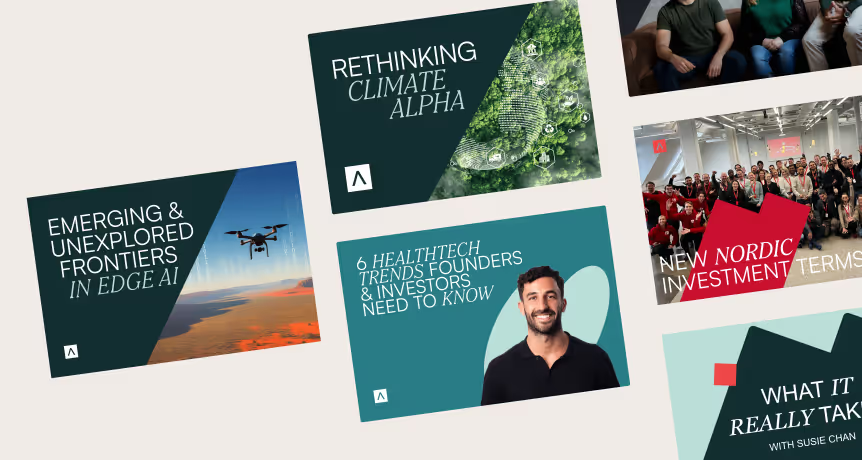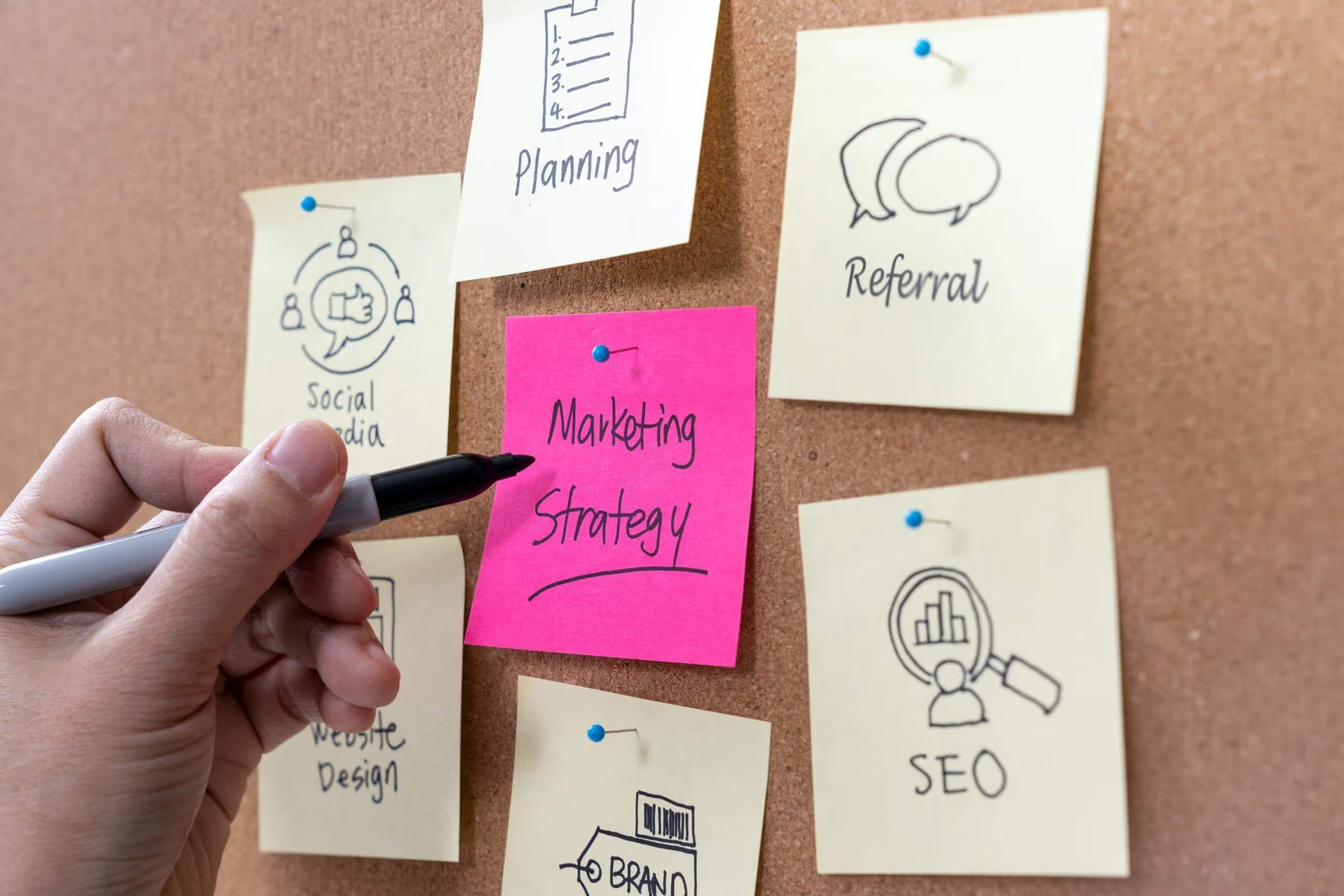Archetype 1: Consumer Digital
This is one that most of us are familiar with. From booking a car to comparing flight prices to dating online - the consumer digital archetype is composed of businesses that serve a large customer base and seek to make our daily lives easier. Capturing a large user base sounds appealing enough to the VC who wants to invest in a potential unicorn since many of these consumer businesses are able to scale in size quickly due to mass appeal. But what are some barriers and considerations? Let's take a look:
• A low barrier to entry = need to stand out early: Consumer startups often struggle with a low barrier to entry. Meaning competition is often rife. With the ability to use non-proprietary tools easily, we often find it difficult for consumer startups to find a unique selling point that sets them apart. In this scenario, Antler often advises startups to study the competition, research their consumer market targets and determine needs upfront before investing too heavily in their ideas.
• Brand as a way to make life easier and better: "The best in class solution" for X It is easy to win consumers over with price-driven strategies and free promotions but to win the hearts of consumers, you'll need to appeal to them with a brand that echoes their values and choices and, most of all, their ability to see a better way to solve life problems with your solution. In the consumer digital archetype, one of the best ways to raise the barrier for entry is to build a moat around a strong brand. For startups, we think it is important to couple growth methodologies with brand principles to create a more cohesive proposition for your customers. With that ability to identify your first brand loyalists, you'll then be able to keep creating more "lookalike" audiences based on your brand values and consumer insights.
Archetype 2: Direct to consumer/consumer hardware
This archetype has been hot thanks to the successes of Glossier and Warby Parker. Unlike the consumer hardware startups of yesteryear, this category has evolved to include products such as household items, mattresses, and eyewear. This all sounds great, but what do startups in this archetype need to do?
• Product differentiation and development: For consumer hardware startups like Tesla, you're seeing a brand new opportunity. The only electric vehicle focused on performance and style has carved out an immediate niche for itself by redefining the space. However, deep pockets are necessary for disruption, and often, startups wanting to disrupt in a niche like this are going to require an all star team and a leader with a proven track record. On the other end of the spectrum, you've got Casper. As a startup that created the "sleep category", Casper took a non sexy industry and turned it into an engaging consumer brand that talked to people about how to manage sleep quality. Unlike Tesla, product development costs for a foam mattress are way less and can also, as a result, create more copycats (see Low barrier to entry above). So early differentiation through product evolution, market and category expansion - Casper has a hardware division and other sleep products - are essential to survival and competitive advantage.
• Brand as a lifestyle: Much like consumer digital companies, these direct-to-consumer/consumer hardware companies often have to sell their brand ideals to their consumers. However, instead of "selling solutions to make lives better", the D2C brand is focused on selling a lifestyle. Take Away Travel for instance. With Away's use of influencer collaborations, a travel magazine and social media content full of aspirational getaways, the Away suitcase owner suddenly becomes part of this traveling tribe that thinks about new ways to explore the world.
Archetype 3: Enterprise Software
This one is comparably easy to scale and build with the right team, tools, and industry expertise. Enterprise software - which typically focuses on solving workflow productivity across various industries - makes this archetype popular amongst VCs. However, Archetype 3's success is driven by the following:
• Being a strong "challenger" brand: With various legacy systems in place at many large enterprises, your enterprise software company needs to be able to integrate easily with existing systems, or be able to replace them flawlessly. If you make integration difficult, you most likely will not be able to get your foot in the door anywhere since current systems in place usually demand the ease of exporting data and porting features quickly and easily for minimal disruption. Simply put, if your solution is not 10x better than the one the company already has, there is very little chance they will take the time and effort required to adopt it.
• Longer sales cycles and creating key customer milestones: With enterprise software, making sure that your solution will lead to customer success is key. With this in mind, building a plan to accommodate key milestones for your customer's workflows, along with having to sell your solutions in person, will make your sales cycles potentially longer. In this case, we often see that teams need to be prepared with case studies, white papers and presentations along with a solid product demo catered to your customer to overcome the various use cases that could present themselves.
Archetype 4: Enterprise Hardware
The ambition of archetype four, enterprise hardware, is a lofty one. Usually game-changing, they look to create smart equipment/IoT products that solve issues across various key industries. However, like consumer hardware, it often requires deep pockets and years of development to get to fruition. Startups that require that sort of backing often are then tied to larger corporates who have specific needs for scalability, or to governments who have money to spend and want to increase innovation for given sectors. So how can you be successful in this archetype?
• Source demand early: Most enterprise hardware startups have sky-high goals. In order to be successful, it is paramount to have an endgame in mind, or preferably, have seen a demand for what you're building. This can be through government proposal requests, or a company's need to introduce robotics to speed up productivity.
• A GTM timeline with aggressive MVP milestones: Most companies in this space have insanely long timelines to market. Due to complexity, their time to market can be 5-10 years depending on safety and compliance testing. A great example of this is Starsky Robotics. Having taken $20 million, they failed to meet market demand fast enough to create an autonomous truck that would serve the industry's immediate needs and ended up folding this year.
Archetype 5: Compounds/Materials Development
This brings us to archetype five. Materials Development is probably the "newest category" to emerge with a rise in the creation of supplements, 3D printing and renewed interests in sustainability, wellness and innovation. This archetype spans the creation of new medical products for recreational and medicinal use (CBD), nutritional supplements and lab-grown meat.
• Be prepared for rigorous testing: With the introduction of many products in this category being ingested vitamins and pills or used as substances for health reasons (3D printing for hip replacements/deformities), these companies often have to meet standards like the FDA, HIPAA and more, depending on the countries they plan to sell in. Keeping that in mind, founders need to really be prepared for what may come for GTM. Cosmetics, for instance, cannot be sold in China unless they are tested on animals. This is the reason Glossier has not entered the market there.
• Determine which markets to enter: In addition to rigorous testing and compliance, deciding which markets to enter first is critical. This prevents you from locking up your product development cycle testing for every single market's compliance standards.
All in all, as you can see, the GTM of these five archetypes differ but all require a closer deep dive across operations, marketing, sales and customer service methodologies. With each startup, various challenges will arise and taking note of these early, as you determine which archetype to pursue, will help drive your success in the long run.











